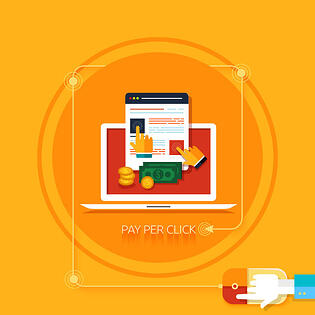Search advertising is one of the easiest ways to drive impact with digital marketing. The tools are free, the media buys are often affordable enough, and the results can be extremely powerful. On the other hand, it’s easy to make mistakes, which can cost you a lot of money.
We come across a lot of people who have been running PPC campaigns to increase their traffic and win business. However, when we really looked into their account, the ROI was negative. They were losing money, not growing revenue.
Game-Changing AdWords Performance Tips
Often times, the difference between wasting a lot of money in PPC, and really seeing a high ROI is in simple adjustments to bidding strategies, keywords, and the target landing page. Before getting started with PPC on AdWords, consider these 11 tips for driving the most conversions possible.
1. Landing Pages Matter. A Lot!
Choose your landing page carefully when setting the target URLs of ads. Although you may think that your homepage is the best place to send prospective customers, this is usually not a good idea.
Most homepages contain a lot of general information that is irrelevant to the prospect. A good landing page is directly related to the ad, so that a person who clicks on an ad for lawnmowers, for example, sees a page with special deals on a specific model rather than a general storefront welcoming her or him to a gardening e-commerce site.
2. Keep Search and Display Focuses Seperate
Tackle your targeting settings for placements on Google's search and display networks separately. The search network keywords must be very specific, so as to determine intent, while display network keywords should be broader, so as to determine topic interests.
3. The Highest Bid Doesn't Always Mean Highest ROI
Don’t bid specifically for the top spot. As long as your ad runs within the top three spots, it'll get plenty of exposure and clicks.
4. Add Negative Keywords Daily
Use negative keywords to help with targeting and weed out customers who are not interested in your product or service. For example, if your business fulfills orders solely offline, you may want to exclude keywords that include the words “online,” “digital” and the like.
5. Quality Score Directly Impacts Placement, Cost, and ROI
Keep an eye on your Quality Score, which will reveal Google's assessment of the relevance of the keywords you have chosen for your campaigns, the copy in your ad, and the relevancy of the landing page. A higher quality score means stronger bidding power at lower cost. A quality score of 8 will cost much less for the top spot than a quality score of 5.
6. Don't Panic With a Low Click Through Rate
Consider using PPC for building brand awareness. Although you may find that you are wasting money promoting your brand instead of relying on organic reach, sometimes a low clickthrough rate is a good thing, since it means your message is getting in front of people's eyes without any media spend.
7. Buyer Persona Paint Points Are Critical for Ad Copy
Take your buyer personas and their pain points into account when writing copy. Despite the fact that PPC ads are extremely limited in size, it is crucial to write microcopy that will resonate.
8. Monitor Your Competitors. Fight Them Where They're Weakest.
Keep an eye on what your keyword competition is up to, to see which keywords you should also be competing for – and which ones they have monopolies on by bidding higher than you or anyone else is willing to.
9. Strategically Bid on Brand Related Terms
It's generally best to avoid bidding for keywords that you already rank for organically, including your brand name. On the other hand, some experts argue that seeing your brand name twice on one search results page will increase clickthroughs, so you should simply lower your bids for these keywords and rely more on organic rankings.
10. Test and Improve. Always.
Measure, rinse and repeat. One of the great things about working with PPC is access to detailed data reports, so you can see what’s working and what’s not. Track results carefully and make changes as necessary. Keep in mind, though, that what works this month may not work next month, so even successful ads need to be monitored regularly – and either improved or killed if they stop working.
11. Keep a Consistent Message From Point A to Point Z
Beware of any potential disconnect between the content on your ad target landing page and the message in your ad. Be consistent so that prospects feel confident that they have arrived where they wanted to. Building trust starts with delivering on the "promise" of your microcopy.
Harnessing the power of PPC
PPC can be a boon for your brand awareness, business leads and sales, but only if done right. You might find it tempting to simply blast out a bunch of ads and subsequently ignore them, but that’s a recipe for throwing away good money. If you want to drive real business with PPC, follow these guidelines and don’t forget that you're in it for the long haul.
A content and social media marketing specialist, Ben Jacobson joined the Lean Labs team in the summer of 2014. Ben has been active as a digital branding professional since the early days of social media, having overseen projects for brands including MTV, National Geographic, Zagat and Wix. His writing has appeared in Social Media Explorer, Search Engine Journal, Techwyse and the Mad Mimi Blog. Ben resides just south of the Carmel Mountain ridge in Israel with his dashing wife and two sprightly descendants.




